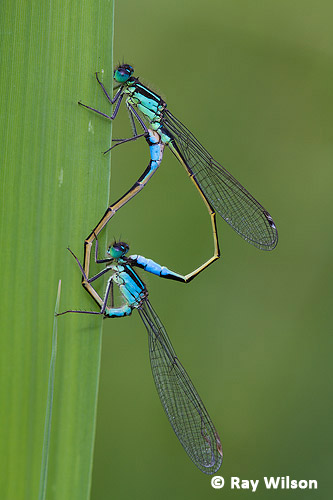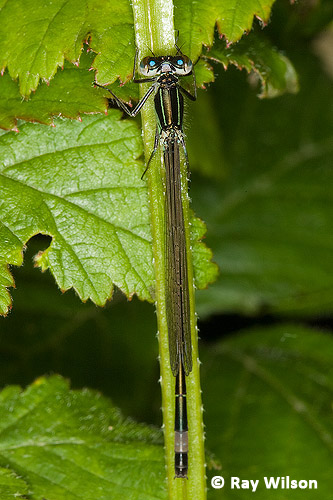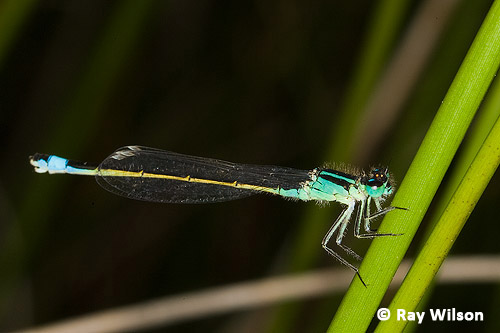
Ischnura elegans
Blue-tailed Damselfly

Male copulating with |

Male copulating with female of andromorph form 'typica' |
Blue-tailed Damselflies are an abundant species throughout most of the UK and, due to their ability to tollerate a degree of pollution and eutrophic conditions, they are usually the first species to colonise new ponds.

male - Nottinghamshire, England - July 2011
Females occur in a number of colour forms, many of which are age-dependent.

teneral male |

female of colour form 'rufescens' |
A common colour form in young females, up to about 8 days after emergence, is the so-called "rufescens" (above right and below). As they mature the rufescens females take on a yellowish-brown colour that includes the formerly blue abdominal segment 8. An example of this 'infuscans-obsoleta' form is shown in the left-hand photo at the top of the page.

female of colour form 'rufescens' - Wirral, England - June 2007
Another common colour form in young females is "violacea".

female of colour form 'violacea' - Attenborough, Nottinghamshire, England - July 2012

female of colour form 'violacea' - Attenborough, Nottinghamshire, England - July 2012
These usually mature into the andromorph form "typica" (below) or can also attain a brownish form "infuscans".

female of andromorph colour form 'typica' - Cheshire, England - August 2008
Ray Wilson owns the copyright of all images on this site.
They may not be used or copied in any form without prior written permission.
raywilsonphotography@googlemail.com